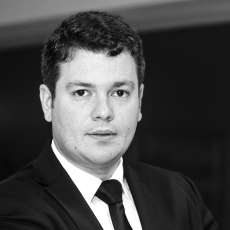Nuclearelectrica was founded in 1998 and is the only nuclear energy producer in Romania. The company presently operates two nuclear units with an installed capacity of 1,400 MWh, covering 18-20% of the country’s energy needs.
The project for the National Energy Strategy 2018-2032 includes the development of two new units for nuclear energy production. Can you expand on the investments planned by Nuclearelectrica in the coming years?
The investments that we have underway are the biggest when it comes to the energy sector in Romania. Firstly, we are working on the refurbishment of Unit 1 CNE Cernavoda, which will extend its lifetime for another 30 years. It is an extremely complex project, similar in terms of efforts to the construction of a new facility but with fewer costs involved. We expect the refurbishment will require approximately EUR 1,5 Bn, however, to have a clear understanding of the investment we need to finalize the feasibility study which will be ready in 2021. This project is handled 100% by Nuclearelectrica.
In parallel we are planning the construction of two new reactors, this time through a joint venture with China General Nuclear Power Corporation (CGN), which will hold a 51% stake. The selection process took place in 2014 and in May 2019 we have signed a preliminary agreement for the creation of a new entity which will manage this construction. The company will be established for a period of two years and the new units are expected to start producing in eight years, namely in 2027.
What investments will be required to develop reactors 3 and 4, and what are the expectations in terms of production?
Cernavoda power plant was initially designed in the 1970s and the goal for it was to accommodate five reactors. The new units will use the same technology that we have in place currently, namely the Canadian CANDU technology which is one of the most robust in the world (no incidents have ever taken place in nuclear plants that use this technology). Our power plant is, in fact, certified as one of the safest in the world according to international standards.
The new reactors will each produce 700 MWh and in terms of investment we expect they will require around EUR 6,4 Bn. This estimate is based on the most recent feasibility study which was performed back in 2012, so we may need to adjust the amount when we consider new market data because many things have changes in the economy since.
Some countries, like Belgium, have decided to fade out nuclear energy. What role do you expect it to play in Romania’s future energy mix?
A change of paradigm is presently taking place at EU level, and I am referring here to the decarbonization targets - the plan is to decrease the carbon footprint with 40% by 2030, and with 80% by 2050. To reach these targets countries need clean sources of energy. Part of it will be achieved through renewable energy sources, however, they will not suffice especially if we take into account the need to have a stable energy system. A recent study published by MIT (Massachusetts Institute of Technology) shows that nuclear energy will play a key role in achieving decarbonization targets, and offer stability and security of supply.
Belgium is indeed phasing out nuclear energy, but many other European countries plan to develop nuclear programs: by 2050, Bulgaria targets 36% nuclear energy, Poland 28%, Hungary 58%, Slovenia 48% and so on. Many of these are starting to develop their nuclear programs from scratch, not an easy feat if we consider that a nuclear power plant requires numerous studies and strong expertize, difficult to identify in a market that does not have previous experience. Romania has an advantage from this point of view, holding some of the best specialists in the world. We expect nuclear energy to represent 27% of the energy mix in Romania by 2050, including the new units that are being built.
The challenge of making nuclear power safe also includes the way in which waste is managed. What set up does Nuclearelectrica have in place to avoid potential hazards?
The fuel used at Cernavoda is stored for a period of six years in a tank located inside the reactor building. After this period, the waste is moved to an intermediary storage tank, which is being continuously developed to ensure that it will be enough to store the entire fuel that will be used in the four reactors.
According to Romanian legislation the final storage is handled by ANDR (The National Agency for Radioactive Waste) and we work closely with them in this matter. For instance, we pay a tax of EUR 2/MWh - EUR 1,6 is used for final storage whereas the remaining EUR 0,4 goes towards a decommissioning fund, for when the power plant will reach the end of its life cycle.
Nuclearelectrica has recently signed a MoU (Memorandum of Understanding) with NuScale. What are you looking to achieve through this collaboration?
NuScale is an American company that develops modular reactors with a capacity of 60 MWh - a nuclear plant can typically accommodate up to 12 such modular reactors. It is a new technology that adds a certain level of flexibility, one of the market’s present needs.
The MoU is meant as an exchange of expertize and know-how, a common practice internationally in the nuclear energy field. The key goal is to remain up to date with the most recent technological advancements in the sector.






